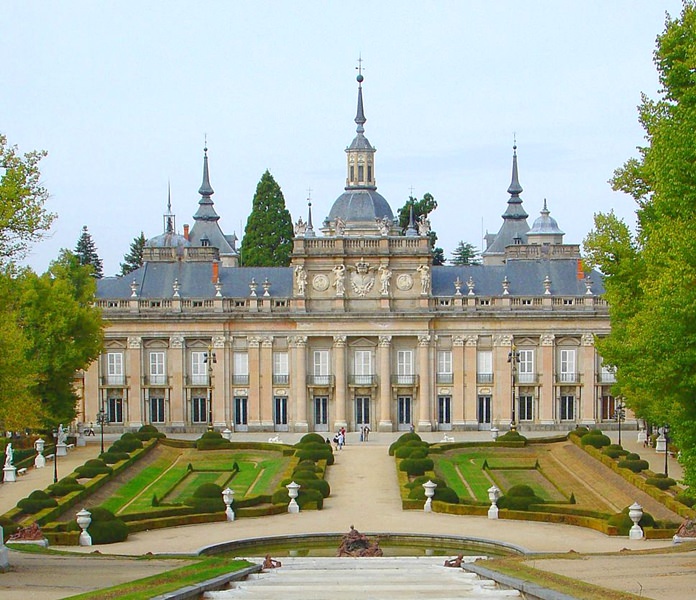
The recent arrival of November reminded me of the cold grey days of early winter in the Old Country and as a teenager, having to traipse to school in the damp and dismal island air. I often used to listen to baroque music first thing in the morning before going to school because a fix of a lively baroque beat would give me enough firmness of spirit to deal with the bleakest of days. I suppose nowadays, this kind of behaviour might be considered a bit nerdish, if not downright peculiar.
My favourite starter for the day was any of the six Brandenburg Concertos. These are not concertos in the sense that a single instrument battles it out against an entire orchestra but an older type of work known as the concerto grosso or “big concerto”. The main feature of the concerto grosso was that single instruments or small groups of instruments in the ensemble were contrasted against each other.
The original title of Bach’s work was Six Concerts à Plusieurs Instruments which in 1721 he presented to Christian Ludwig, the Margrave of Brandenburg. At the time, Bach was job-hunting, and he sent the concertos to the Margrave as an elaborate form of job application together with a long-winded dedication of toe-curling obsequiousness. Although they were presented as a set, the music had actually been cobbled together from earlier works that Bach had written at various times during the previous eight years.
Perhaps Christian Ludwig had been tipped off that he’d been given a recycled offering, because he was evidently a bit miffed and didn’t even bother to thank Bach for the music, let alone pay him. Bach didn’t get the job either. The concertos were consigned to the Margrave’s library and remained unknown until they were eventually rediscovered in 1850. What the Margrave clearly didn’t appreciate was that they represented some of the finest examples of baroque orchestral music.
The chapter in history that we now refer to as “the baroque” lasted roughly between 1600 and 1750. The movement gradually spread from Italy and influenced music, painting, sculpture, theatre and architecture throughout Europe and beyond. Baroque buildings were ornate and imposing, with impressive detailed facades; paintings had a sense of grandeur, richness and drama. Some of these features were echoed in music. Melodies were often elaborated with trills and various other ornamental devices. Rich, sonorous textures created by elaborate counterpoint were the order of the day as were dramatic contrasts of sound, with lively rhythms dominating the fast movements. Baroque music nearly always used the so-called basso continuo, an improvised accompaniment usually provided by a harpsichord and cello or double bass.
This is one of the most exhilarating performances of the work available. The playing is crisp with a superb sense of ensemble and rhythm. Third Concerto is scored for three violins, three violas and three cellos with basso continuo. Unusually, there’s no slow movement and the printed score merely shows two sustained chords. Clearly something is missing. It’s thought that a slow movement might once have been improvised at the harpsichord, possibly by Bach himself. This would have made an effective contrast between the two bustling outer movements. But really, there’s no way of knowing what Bach originally wanted.
The two chords (which if these things interest you, form a Phrygian Imperfect Cadence) lead into the rollicking, foot-tapping third movement which is full of lively rhythms and brilliant counterpoint. The groups of strings hold sparkling musical conversations between each other and sometimes the entire ensemble plays in octaves, a dramatic technique which Bach had borrowed from Vivaldi. And in case you’re wondering the letters BWV stand for Bach-Werke-Verzeichnis (Bach-Works-Catalogue), a complete listing of his music and first published in 1950.
Handel wrote a couple of dozen concerti grossi (to use the correct Italian plurals), most of which were published in two sets as Opus 3 and Opus 6. The latter collection consists of twelve concertos that Handel wrote in 1739. They’re scored for a group of two violins and cello supported by string orchestra with harpsichord continuo.
In this five-movement work, Handel brings a huge variety of interest to the music and these concerti, like those of Bach are generally considered to be amongst the finest examples of the genre. Typical of the late baroque, the concerto uses contrasts of loud and soft, contrasts between one or two instruments and many, charming question-and-answer patterns and in the faster movements, the lively chugging beat that Handel evidently enjoyed so much. Notice how the instruments imitate each other when they play the elaborate melodies. This lively music still makes a great start to the day.
 |
 |





